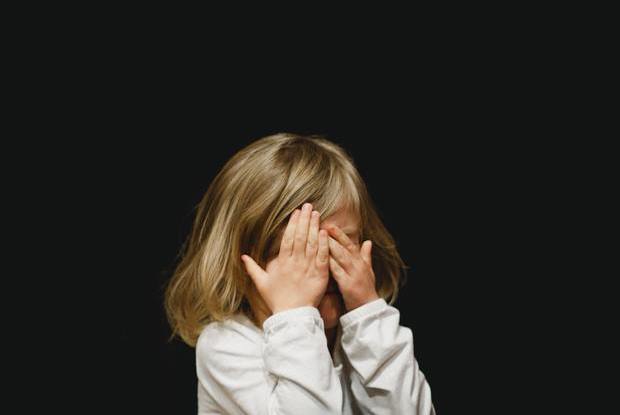Table of Contents
I. What is an anxiety disorder?
IV. Obsessive-compulsive disorder (OCD)
What is an anxiety disorder?
Anxiety disorder can be a debilitating illness that can significantly affect a person’s social and work life. Excessive worry leads to stress about situations that are entirely out of your control, and this stress can have adverse effects on your health and wellbeing. These worries can leave a person feeling on edge and lead to adverse side effects, like problems sleeping and muscle tension. Generalized anxiety disorder (GAD) can develop as a child or as an adult and can often manifest into other disorders.
GAD symptoms often include overthinking plans, an inability to relax, and indecisiveness. This disorder can be improved with medications, lifestyle changes, and psychotherapy. It is essential to pay attention to the development of any other conditions that often accompany generalized anxiety disorder. Luckily, many of the following disorders can be treated with medications like Lexapro, psychotherapy, as well as mindful lifestyle changes. [1]

Panic disorders
A panic disorder involves an overwhelming combination of physical and psychological distress. Those who have panic attacks may feel like they are experiencing a heart attack or life-threatening illness. Panic attacks can occur for apparently no reason or can be caused by a response to a feared object. Some symptoms of a panic disorder may include:
- Palpitations or pounding heart
- Sweating
- Shortness of breath
- Feeling of choking
- Feeling dizzy, light-headed or faint
- Numbness or tingling
- Fear of losing control
- Fear of dying [2]
People experience a panic attack when they become overwhelmed by the sensations listed above. Typically, panic attacks reach their peak within ten minutes or and can last for up to half an hour. Depending on the severity of the disorder, these attacks can occur several times a day or once every few years.
Panic disorders do not have a single cause but can occur due to family history, biological factors, and negative experiences. If you have experienced extremely stressful life events, like sexual abuse or periods of ongoing stress, then you may be at risk. [3]
Phobias
A phobia is a persistent fear of a specific object or situation. This situation or purpose is generally not harmful, but a person’s fear is excessive, and they cannot overcome it. Some common phobias include fear of snakes, spiders, heights, or traveling on a plane. People with these phobias are often aware that their reactions are exaggerated, but they feel that their fear towards a specific object or situation is uncontrollable.

Specific phobias are typically divided into the following categories:
Animal type: A person has a fear related to an animal or insect, like a fear of dogs or spiders.
Situational type: This fear includes specific situations like riding in an elevator, bridges, or driving.
Natural environment type: This type involves concerns associated with the natural environment, which can include a fear of heights or thunder.
Injury/injection type: This fear includes invasive or non-invasive medical procedures, like surgery, getting blood drawn, or receiving an injection.
Other: Phobias can also include choking, fear of vomiting, fear of public speaking, and a general social phobia. Social phobias involve people being overly concerned about how they appear to others.
Many people with phobias develop them in childhood. Children are more likely to develop phobias over other anxiety disorders. Learning to manage your fears is part of growing up, but some people cannot shake their phobia, and it can follow them into adulthood. [4]
a. Agoraphobia
Agoraphobia is the debilitating fear of not being able to escape certain situations or the fear that help may not be available in the event of panic symptoms. This fear is usually out of proportion with the situation and causes many problems in the functioning of everyday life. A person with this disorder typically has concerns in two or more of the following situations:
- Being outside the house alone
- Standing in line or being in a crowd
- Using public transportation
- Being in open spaces
- Being in enclosed spaces
A person with agoraphobia avoids situations where they may experience feelings of panic. If agoraphobia is left untreated, a person may grow unable to leave the comfort of their own home. This disorder is often left undiagnosed until this overwhelming fear alerts family members and begins to interfere with normal daily activities significantly. [2]
Obsessive-Compulsive Disorder (OCD)
Obsessive-compulsive disorder involves unwanted patterns of thoughts and fears. These patterns can lead to repetitive behaviors or compulsions. These compulsions interfere with daily life and distress. OCD centers around specific themes, such as an excessive fear of germs and contamination. Some people may not realize their obsessions are interfering with their life and taking up the vast majority of their time. Some examples of obsessive signs include:
- Thoughts about shouting obscenities or misbehaving in public
- Avoidance of situations that trigger obsessions
- Doubts that you’ve locked the door or turned off the stove
- Fear of being contaminated by touching objects
- Intense stress when objects aren’t orderly

Some themes of compulsions also include:
- Orderliness
- Following a strict routine
- Demanding reassurance
- Checking
- Counting
- Washing and cleaning
OCD has levels of severity and often begins as a teen or young adult. The symptoms often begin gradually and can increase in intensity over time. [5]
Social Anxiety Disorder
A person with this disorder experiences a lot of anxiety at the thought of being embarrassed, humiliated, or rejected in social situations. Those with social anxiety often avoid situations that can cause anxiety. People can experience social anxiety at the idea of giving speeches at a wedding, giving a presentation, or attending formal functions. Common symptoms of social anxiety can include:
- Nausea or diarrhea
- Trembling
- Excessive perspiration
- Blushing or stammering when trying to speak
Those with social anxiety can become distressed with social situations, and this can impact their relationships, work-life, as well as everyday activities. Causes of social phobia can include family history as well as learned behavior. Temperament is also a key factor, and adolescents who are shy or socially inhibited are at risk for social anxiety. [6]

Diagnosis and treatment
Each anxiety disorder has unique characteristics, so diagnosis and treatment depend on your specific condition. Your doctor will recommend a mental health professional to work with you to provide the best treatment. Talk therapy (psychotherapy) and medications are often the first lines of treatment for those with anxiety disorders. Medications like Lexapro are antidepressants that will not cure anxiety but can relieve symptoms. Lexapro helps restore the brain’s natural hormone levels and improve mood.
It is also essential for people with anxiety disorders to develop proper coping skills. Cognitive-behavior therapy (CBT) helps people recognize their bad behaviors and patterns. A CBT professional works with a patient to better understand their disorder and develop self-help mechanisms to cope with their condition. [2]
The content provided in this article is based on thorough research and in some cases, reviewed by a medical professional. Our goal for the information is to provide helpful, general health informational. It is not intended as a substitute for professional medical advice.
